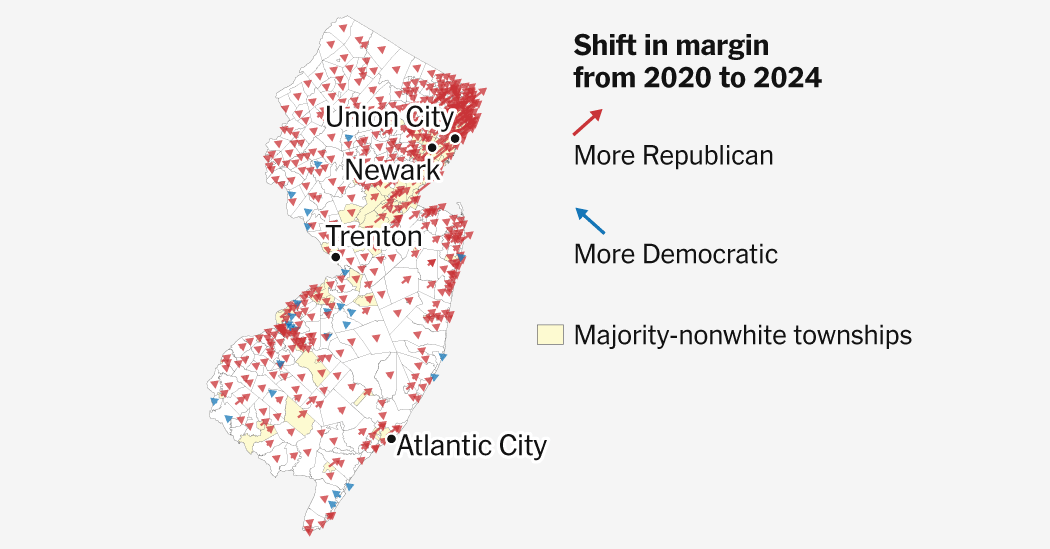Moments after Jack Ciattarelli, the Republican candidate for governor of New Jersey, bounded down the steps of his campaign bus on the first day of early voting, he began to rattle off statistics about the size and strength of the state’s Latino population.
“We have more than two million people that are of Hispanic descent and more than 500,000 that are Puerto Rican,” Mr. Ciattarelli said, flanked by the Republican governor of Puerto Rico who had flown in to campaign with him. “And we’re so very happy that they called New Jersey home.”
Latino voters are not only a critical swing bloc in this year’s New Jersey governor’s race but also an important test nationally of just how enduring the gains that President Trump made last year in the Hispanic community will prove.
Mr. Trump lost New Jersey by less than six percentage points in 2024, a surprisingly close result that came largely because of his remarkable strength in the state’s most diverse areas. Every single one of New Jersey’s 29 townships with a majority Hispanic population swung in Mr. Trump’s direction between 2020 and 2024 — by an average of 25 percentage points.
A handful of once reliably Democratic areas flipped to the G.O.P., including Clifton, a township that is roughly 40 percent Hispanic and where Mr. Ciattarelli’s bus stopped on Saturday.
The post What New Jersey Could Reveal About the Future of the Hispanic Vote appeared first on New York Times.




